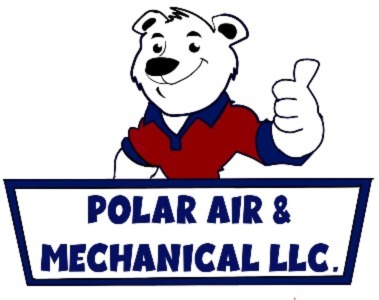
Ceiling fans are one of the most underrated ways to enhance comfort and lower energy costs. By boosting air circulation and working in conjunction with your HVAC system, ceiling fans and energy efficiency are truly a match made in heaven. They offer a cost-effective, eco-friendly way to stay cool while easing strain on your AC—helping you avoid unnecessary air conditioning repair.
In this blog, the experts at Polar Air & Mechanical explain how ceiling fans can improve your comfort while lowering your energy use with higher HVAC efficiency. We'll also provide some HVAC efficiency tips that make the most of ceiling fans.
Comfort vs. Temperature: Getting Comfortable with the Wind-Chill Effect Indoors
Ceiling fans don’t actually change the room’s temperature—they make your home more comfortable by moving air over your skin. This is called the wind-chill effect, and it can make a room feel up to 4 degrees cooler without lowering the thermostat. That means you remain cool and enjoy the benefits of indoor air circulation from your ceiling fan while relying less on your air conditioner—helping reduce your electric bill in summer.
The Best of Both: Advantages of Pairing Fans and Air Conditioning Together
There are several benefits to using ceiling fans and air conditioning at the same time, especially on hotter days. By pairing both, you boost HVAC efficiency and enjoy a cooler living space with less work from your cooling system.
Benefits of using ceiling fans and AC together:
- Ceiling fans help lower HVAC load by moving cool air more evenly around the room. Reducing HVAC stress is important, because it can help you avoid a breakdown that could result in premature AC or furnace installation.
- Using overhead fans boosts the comfort level of your home by eliminating hot spots and increasing airflow.
- Running both ceiling fans and AC can reduce overall energy use. If you have a home automation system, you can even adjust your smart thermostat settings to set the temperature higher while your ceiling fan is running.
Clockwise vs. Counterclockwise Ceiling Fan Rotation: Which Direction Should a Fan Spin?
To maximize the benefits of your ceiling fans year-round, it’s important to set the blades to rotate in the right direction for the season. The direction affects how air moves, which can either make you feel cooler or redistribute heat so you feel warmer.
When to spin ceiling fans counterclockwise
On hot days, ceiling fans should turn counterclockwise at a higher speed. This creates a breeze that moves air toward the floor, increasing the wind-chill effect and creating a cooler sensation.
When it's best to spin ceiling fans clockwise
In the winter, set your fan to rotate clockwise on a slower speed. This softly moves cold air up and pushes warm air near the ceiling down toward you, helping you feel warmer without changing your thermostat.
How to Pick Out the Best Ceiling Fan for My Home
Selecting the ideal ceiling fan depends on a few important details, such as blade design, airflow rating and room dimensions. First, look for fans that offer a good balance of ECFM airflow and blade pitch to provide efficient air circulation in your space:
- ECFM refers to how much air a fan moves—the cubic feet per minute, or CFM—per watt of electricity used. Fans with greater ECFM are the most energy efficient.
- Blade pitch refers to the tilt of the blades. A steeper blade pitch moves more air but can also put extra load on the motor.
Also, consider room size when sizing a ceiling fan—a fan that’s too small won’t move enough air, while one that’s too big may be too strong for the space.
Increase Your HVAC Efficiency With the Experts from Polar Air & Mechanical
At Polar Air & Mechanical, our HVAC technicians can help you stay comfortable while reducing strain on your heating and cooling systems. From practical fan advice and air conditioning installation to smart thermostats and furnace repair, we offer comprehensive solutions that fit your lifestyle. Set up your appointment by calling 843-484-3783 today.


